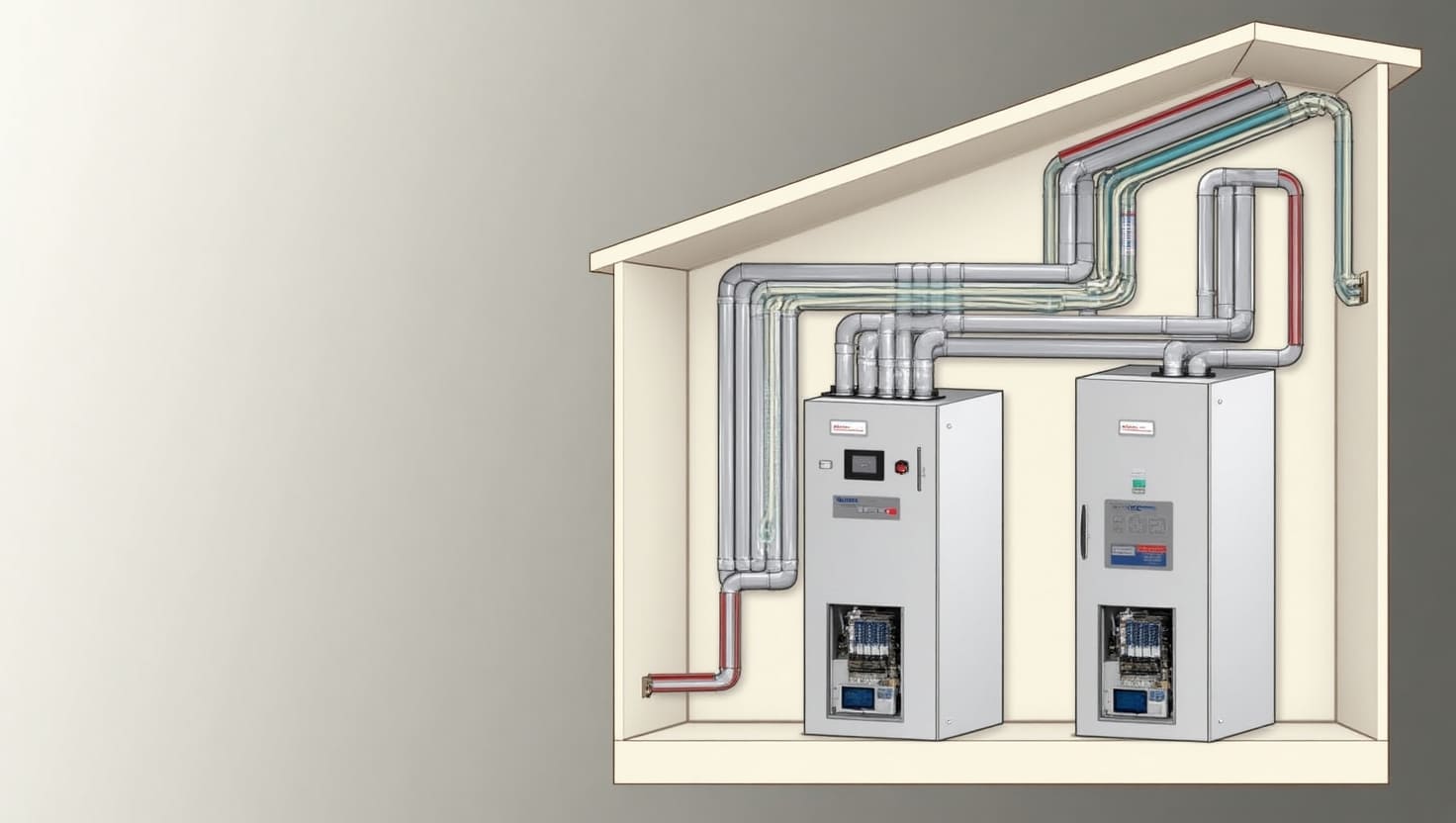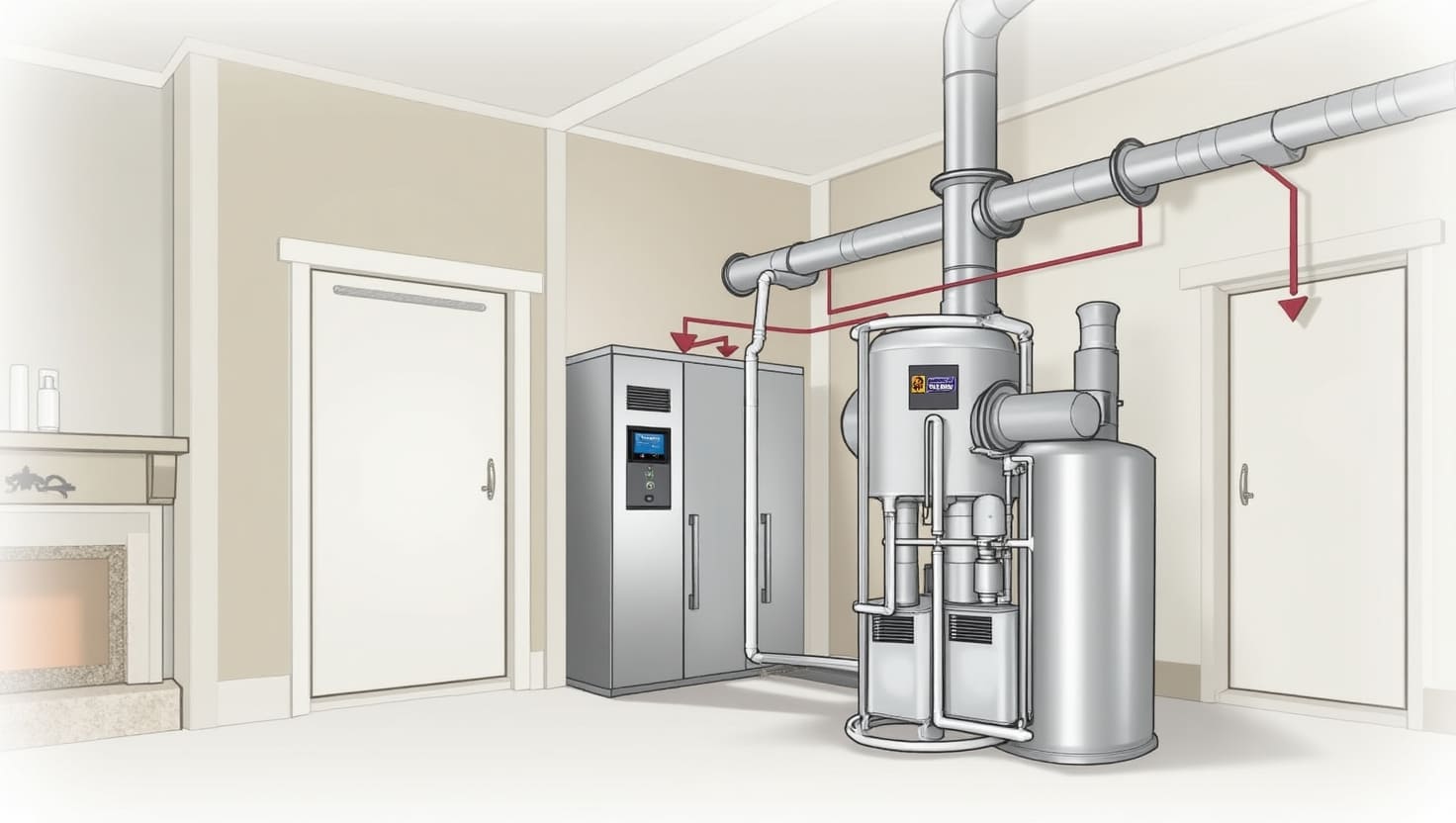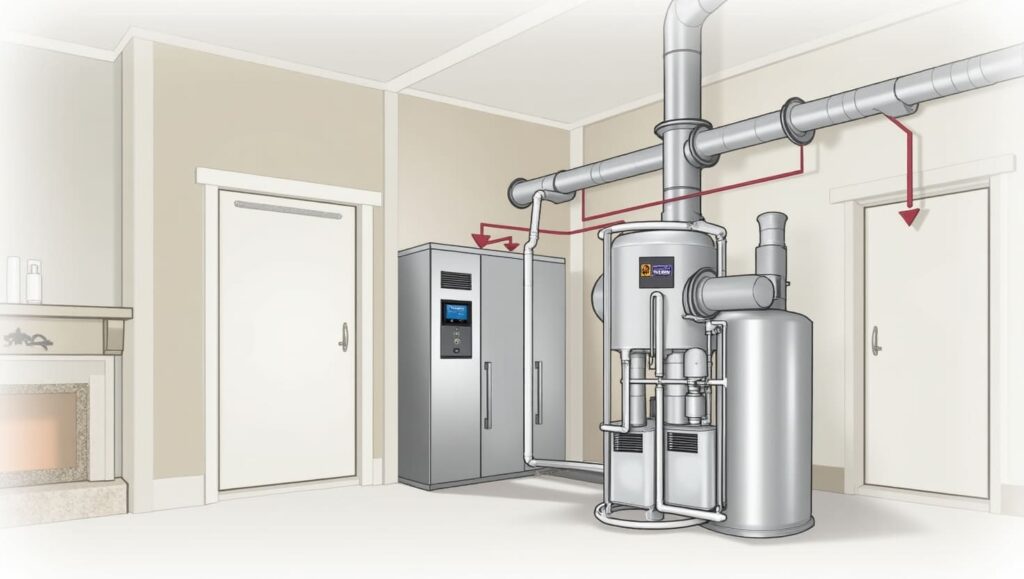The landscape of home comfort and energy efficiency has undergone a dramatic transformation. Gone are the days when homeowners had to choose between heating an entire house to accommodate one chilly room or enduring uncomfortable temperature variations throughout their living space. The HVAC zoning system has emerged as a game-changing technology that’s reshaping how we think about residential climate control and interior design.
Modern homeowners increasingly demand smarter, more efficient solutions that align with contemporary living patterns. Families spend time in different areas of their homes throughout the day, and traditional HVAC systems simply weren’t designed to accommodate these varied usage patterns. An air conditioning zoning system addresses this fundamental mismatch by providing targeted climate control exactly where and when it’s needed.
The integration of zoning technology extends far beyond mere temperature control. These sophisticated systems are influencing architectural decisions, interior layouts, and even the aesthetic elements of modern home design. As we explore this revolutionary technology, we’ll uncover how HVAC zoning systems are creating new possibilities for both comfort and creativity in residential spaces.

Understanding HVAC Zoning: Beyond Traditional Climate Control
An HVAC zoning system operates on a fundamentally different principle than conventional single-zone systems. While traditional systems treat your entire home as one large space requiring uniform temperature control, zoning systems divide your house into distinct areas, each with independent climate management capabilities.
The core concept revolves around strategic placement of motorized dampers within your ductwork. These dampers work in conjunction with multiple thermostats and a central control panel to direct conditioned air precisely where it’s needed. When the living room requires cooling but the bedrooms don’t, the system automatically adjusts damper positions to redirect airflow accordingly.
This targeted approach represents a paradigm shift in residential HVAC design. Rather than forcing your entire home to conform to a single temperature setting, a zoning system HVAC allows each area to maintain its optimal comfort level based on actual usage patterns, occupancy, and individual preferences.
The sophistication of modern ac zoning systems extends to their integration with smart home technology. Advanced systems can learn from occupancy patterns, adjust automatically based on time of day, and even respond to external factors like solar heat gain or seasonal weather changes.
The Multifaceted Benefits of HVAC Zoning Systems
Energy Efficiency and Environmental Impact
The most compelling advantage of HVAC zoning systems lies in their exceptional energy efficiency. By conditioning only the spaces that require climate control, these systems typically reduce energy consumption by 20-30% compared to traditional systems. This efficiency gain translates directly into lower utility bills and reduced environmental impact.
Consider a typical scenario: during daytime hours, family members occupy common areas like the kitchen, living room, and home office. Meanwhile, bedrooms remain empty until evening. A zoning system HVAC can focus cooling or heating efforts on active areas while allowing unoccupied zones to drift to more energy-efficient temperature ranges.
The Environmental Protection Agency recognizes zoned HVAC systems as an effective strategy for reducing residential energy consumption and greenhouse gas emissions. This endorsement reflects the technology’s proven track record in creating more sustainable home environments.
Personalized Comfort Control
Every family member has unique comfort preferences. Some individuals prefer cooler sleeping environments, while others feel comfortable at higher temperatures. Traditional systems force compromises that leave someone uncomfortable. An air conditioning zoning system eliminates these conflicts by allowing each zone to maintain its ideal temperature setting.
This personalization extends beyond basic temperature control. Modern systems can adjust humidity levels, air circulation patterns, and even air quality parameters on a zone-by-zone basis. The result is a truly customized comfort experience that adapts to individual needs and preferences.
Financial Benefits and Return on Investment
While HVAC zoning systems require higher upfront investment than traditional systems, the long-term financial benefits are substantial. Monthly energy savings typically range from $200 to $500 annually for average-sized homes, with larger residences seeing even greater savings.
The financial benefits extend beyond energy costs. Zoned systems experience less wear and tear because they don’t need to condition unused spaces continuously. This reduced workload extends equipment lifespan and decreases maintenance requirements, further enhancing the system’s return on investment.
Essential Components of Modern HVAC Zoning Systems
Motorized Dampers: The Control Mechanism
Motorized dampers serve as the primary control mechanism in any zoning system HVAC. These sophisticated devices are installed within main trunk lines and branch ducts, allowing precise control over airflow distribution. High-quality dampers feature quiet operation, reliable positioning, and robust construction designed to withstand years of regular operation.
The placement and sizing of dampers require careful engineering analysis. HVAC professionals must consider factors like duct size, airflow requirements, static pressure limitations, and acoustic considerations to ensure optimal system performance.
Zone Thermostats: Intelligence and Control
Each zone requires its thermostat, and modern units offer far more than basic temperature control. Advanced thermostats provide programmable schedules, remote access capabilities, occupancy sensing, and integration with home automation systems.
Smart thermostats have revolutionized zone control by learning from usage patterns and making automatic adjustments to optimize both comfort and efficiency. Some models can even detect when zones are unoccupied and adjust temperature settings accordingly.
Central Control Panels: System Coordination
The central control panel serves as the brain of an HVAC zoning system, coordinating communication between thermostats, dampers, and HVAC equipment. Modern panels feature sophisticated algorithms that prevent common issues like short cycling, ensure adequate airflow across the system, and optimize equipment operation for maximum efficiency.
Advanced control panels can interface with building automation systems, provide detailed energy usage reports, and even diagnose potential maintenance issues before they become problems.

Architectural Integration and Design Enhancement
Flexible Floor Plan Design
HVAC zoning systems provide architects and designers with unprecedented flexibility in floor plan development. Traditional HVAC considerations often constrain room layouts and architectural features. Zoning technology removes many of these limitations by providing targeted climate control regardless of room size, orientation, or position within the home.
Open floor plans, which have become increasingly popular in modern home design, present unique challenges for traditional HVAC systems. Large, open spaces can develop temperature stratification and hot or cold spots. An ac zoning system addresses these issues by providing multiple control points within the open area, ensuring consistent comfort throughout the space.
Aesthetic Considerations and Visual Impact
Modern zoning systems contribute to cleaner, more sophisticated interior aesthetics. Advanced damper designs integrate seamlessly with ductwork, eliminating the bulky, visible components that can detract from architectural features. Sleek thermostat designs complement contemporary interior design trends while providing intuitive user interfaces.
The reduced need for return air grilles and registers in certain areas allows for cleaner wall surfaces and more flexibility in furniture placement and room decoration.
Integration with Smart Home Technology
Contemporary HVAC zoning systems integrate seamlessly with comprehensive smart home platforms. This integration allows homeowners to control climate settings through voice commands, smartphone apps, or automated routines that respond to occupancy, time of day, or external weather conditions.
The International Association of Certified Home Inspectors notes that homes with integrated smart HVAC systems, including zoning technology, command higher resale values and appeal to tech-savvy buyers seeking modern convenience features.
Real-World Implementation: Case Studies and Success Stories
Multi-Story Family Home
A 4,200 square foot colonial home in suburban Chicago exemplifies the transformative potential of HVAC zoning systems. The homeowners struggled with their traditional system’s inability to maintain consistent temperatures between floors, particularly during extreme weather conditions.
After installing a four-zone system with separate controls for the main floor, second floor, basement family room, and master bedroom suite, the family reported immediate improvements in comfort and a 28% reduction in monthly energy costs. The system’s ability to focus heating and cooling efforts on occupied areas while allowing unused zones to drift to more efficient temperatures proved particularly valuable.
Modern Open-Concept Design
A contemporary 2,800 square foot home featuring extensive open-concept living areas presented unique climate control challenges. The large, open spaces created temperature variations and made it difficult to achieve consistent comfort throughout the main living area.
A three-zone ac zoning system with multiple dampers within the open area resolved these issues by creating distinct comfort zones within the larger space. The homeowners gained the ability to maintain different temperature settings for the kitchen area during cooking activities while keeping the living and dining areas at optimal comfort levels.
Historic Home Renovation
Retrofitting zoning technology into a 1920s Tudor-style home required creative engineering solutions to work within existing architectural constraints. The project team successfully integrated a zoning system HVAC while preserving the home’s historic character and architectural details.
The installation required careful routing of new ductwork and strategic placement of dampers to avoid compromising structural elements. The completed system provides modern comfort and efficiency while maintaining the home’s period authenticity.
Professional Insights and Industry Expertise
Leading HVAC professionals consistently emphasize the importance of proper system design and installation for achieving optimal zoning system performance. According to industry experts, the most common installation mistakes involve inadequate load calculations, improper damper sizing, and insufficient attention to static pressure management.
“The key to successful HVAC zoning system implementation lies in comprehensive system design that considers not just current needs, but future usage patterns and potential home modifications,” notes a senior engineer with over two decades of experience in residential HVAC design.
Professional installation teams must possess specialized knowledge of zoning control strategies, airflow management principles, and advanced diagnostic techniques. This expertise ensures that systems operate efficiently while providing the comfort and energy savings that homeowners expect.
Calculating Return on Investment and Long-Term Value
Initial Investment Considerations
The upfront cost of an air conditioning zoning system typically ranges from $3,000 to $8,000 above the cost of a traditional system, depending on the number of zones, system complexity, and installation requirements. While this represents a significant initial investment, the long-term financial benefits justify the additional expense for most homeowners.
Energy Savings Analysis
Monthly energy savings from zoning systems vary based on home size, local climate conditions, and usage patterns. However, most homeowners can expect annual savings of $300 to $600 on heating and cooling costs. These savings accumulate over the system’s lifespan, typically resulting in full cost recovery within 5 to 8 years.
Property Value Enhancement
Real estate professionals report that homes with advanced HVAC systems, including zoning technology, command premium prices in competitive markets. The combination of energy efficiency, modern convenience, and enhanced comfort appeals to discerning buyers who value both immediate comfort and long-term operating cost advantages.
Installation Considerations and Best Practices
Professional Assessment and System Design
Successful HVAC zoning system installation begins with a comprehensive professional assessment of your home’s specific requirements. HVAC contractors must evaluate existing ductwork, equipment capacity, structural considerations, and architectural features to develop an optimal zoning strategy.
The assessment process includes detailed load calculations for each proposed zone, analysis of existing ductwork adequacy, and evaluation of current equipment compatibility with zoning controls. This thorough analysis ensures that the final system design meets both performance expectations and budget requirements.
Installation Process and Timeline
Professional installation of a zoning system HVAC typically requires 2 to 4 days, depending on system complexity and any necessary ductwork modifications. The process involves installing motorized dampers, running control wiring, mounting zone thermostats, and configuring the central control panel.
Quality installations include comprehensive system testing, user training, and documentation of all system components and settings. Professional installers should provide detailed operation manuals and ongoing support to ensure optimal system performance.
Maintenance Requirements and System Longevity
Regular maintenance ensures continued efficiency and reliability of HVAC zoning systems. Annual maintenance should include damper operation verification, thermostat calibration, control panel diagnostics, and inspection of all electrical connections.
Well-maintained zoning systems typically provide 15 to 20 years of reliable service, matching or exceeding the lifespan of traditional HVAC systems while delivering superior comfort and efficiency throughout their operational life.
Future Trends and Technological Advances
The evolution of hvac zoning systems continues with emerging technologies like artificial intelligence, advanced sensors, and improved integration capabilities. Future systems will likely feature enhanced learning algorithms that automatically optimize comfort settings based on occupancy patterns, weather forecasts, and individual preferences.
Integration with renewable energy systems, such as solar panels and battery storage, represents another frontier for zoning technology advancement. These integrated systems will provide even greater energy independence and environmental benefits for forward-thinking homeowners.
Transforming Home Comfort Through Intelligent Design
The revolution in residential climate control extends far beyond simple temperature management. Hvac zoning systems represent a fundamental shift toward intelligent, efficient, and personalized home comfort solutions that align with contemporary living patterns and environmental consciousness.
As homeowners increasingly prioritize energy efficiency, personalized comfort, and smart home integration, zoning technology provides a comprehensive solution that addresses all these requirements while enhancing property value and long-term satisfaction.
The integration of zoning systems with modern architectural design creates new possibilities for flexible, efficient, and beautiful living spaces. Whether you’re building a new home or upgrading an existing property, an air conditioning zoning system offers the perfect combination of comfort, efficiency, and technological sophistication.
For homeowners ready to experience the benefits of advanced climate control technology, Indoor Expert Heating and Cooling provides professional consultation, system design, and installation services tailored to your specific needs and preferences. Our experienced team ensures that your zoning system HVAC delivers optimal performance, efficiency, and satisfaction for years to come.


